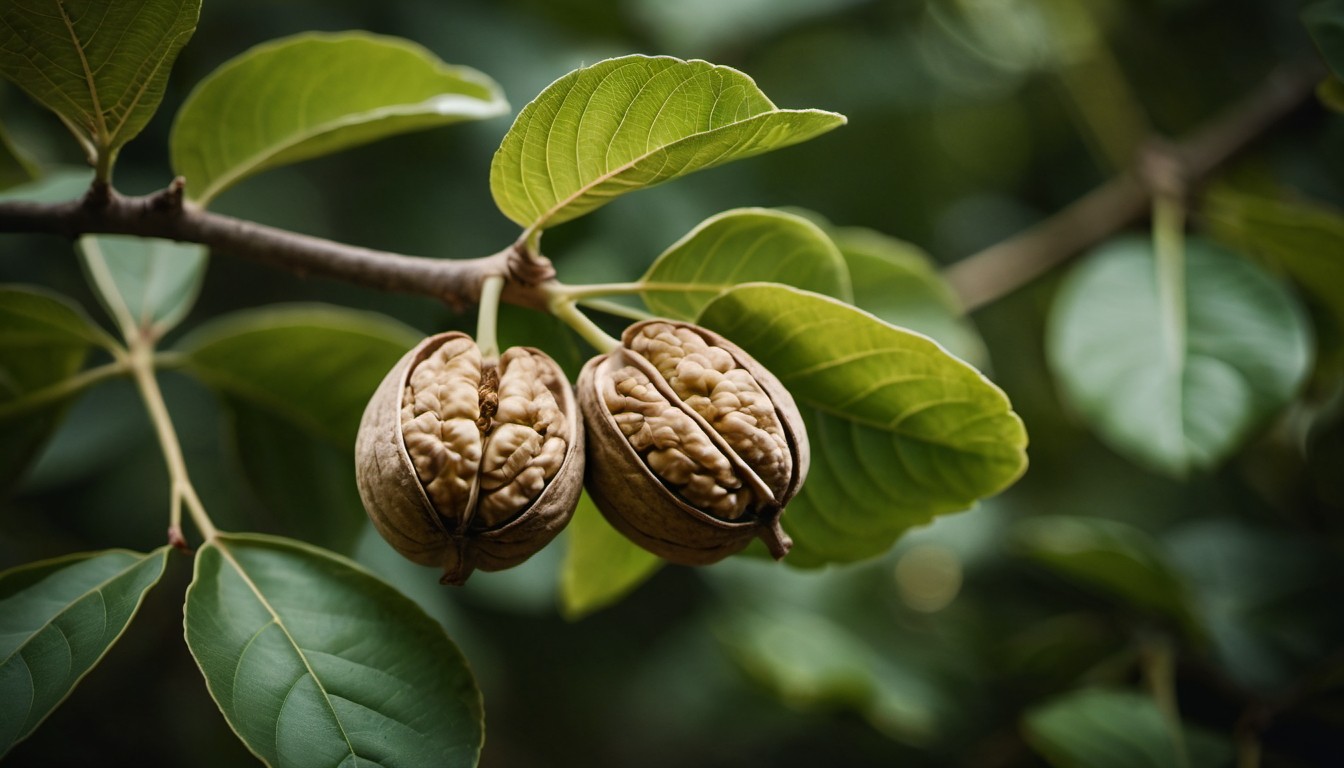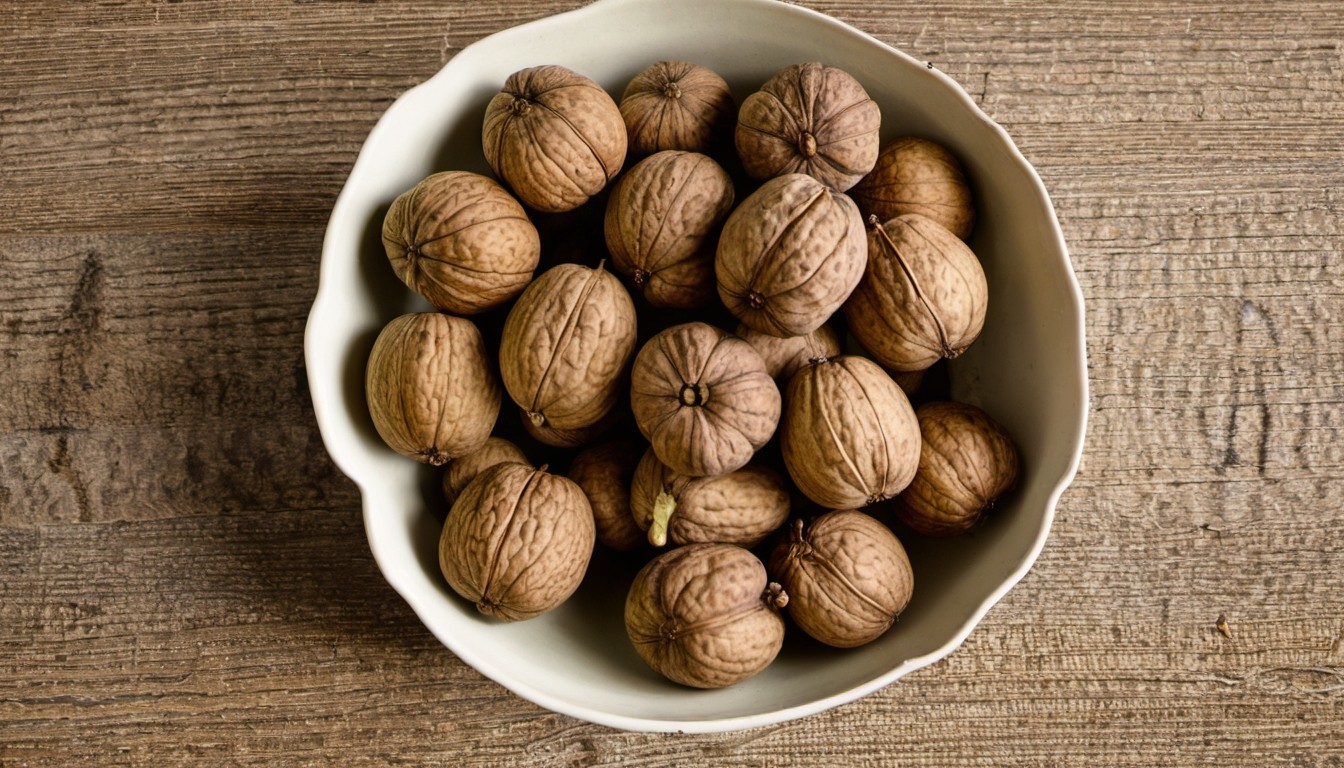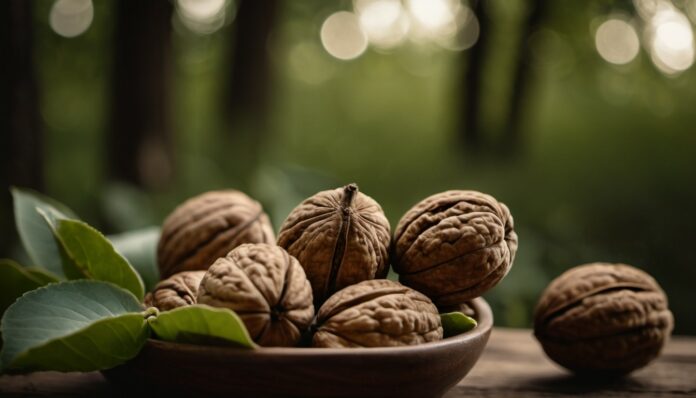Walnuts are a popular nut known for their rich flavor and numerous health benefits. They are used in a variety of dishes and can be enjoyed on their own as a healthy snack.
Walnuts have a hard, round shell that needs to be cracked open to get to the edible part inside. The nut itself is shaped like a brain and has a slightly bitter yet buttery taste.
Types of Walnuts
There are several types of walnuts, but the most common ones are:
- English Walnuts: These are the most widely consumed and have a milder flavor.
- Black Walnuts: These have a stronger, earthier taste and are often used in baking.
Health Benefits
Walnuts are packed with nutrients and offer many health benefits:
- Rich in Omega-3 Fatty Acids: These healthy fats are good for your heart and brain.
- High in Antioxidants: Walnuts help protect your cells from damage.
- Good for Brain Health: The nutrients in walnuts may help improve brain function.
- Supports Weight Management: Despite being high in calories, walnuts can help control appetite and aid in weight loss.
Nutritional Content
A handful of walnuts (about 1 ounce or 28 grams) provides:
- Calories: 185
- Protein: 4.3 grams
- Fat: 18.5 grams (mainly healthy fats)
- Fiber: 1.9 grams
- Vitamins and Minerals: Walnuts are a good source of vitamin E, magnesium, and phosphorus.
 Walnut trees are typically grown in regions with temperate climates. They need well-drained soil and plenty of sunlight to thrive. It can take several years for a walnut tree to start producing nuts.
Walnut trees are typically grown in regions with temperate climates. They need well-drained soil and plenty of sunlight to thrive. It can take several years for a walnut tree to start producing nuts.
Interesting facts about walnuts:
- Walnuts are one of the oldest tree foods known to man, dating back to 7000 B.C.
- They are technically not nuts but rather the seeds of a drupe or stone fruit.
- The word “walnut” comes from the Old English word “wealhhnutu,” which means “foreign nut.”
- Walnut trees can live for more than 100 years and continue producing nuts throughout their lifespan.
- There are over 30 species of walnuts, but the most common ones are English (Persian) walnuts and black walnuts.
- English walnuts originated in Persia (modern-day Iran) and were introduced to Europe in the Roman era.
- Black walnuts are native to North America and have a stronger, more earthy flavor than English walnuts.
- California produces nearly 99% of the commercial U.S. walnut supply.
- Walnut trees belong to the Juglandaceae family, which also includes hickories and pecans.
- The United States is the world’s largest producer of walnuts, followed by China and Iran.
- Walnut trees produce male and female flowers on separate trees, requiring cross-pollination to produce nuts.
- The walnut tree’s fruit is encased in a green, fleshy husk that turns brown and splits open when ripe.
- The edible part of the walnut is the seed or kernel inside the hard shell.
- Walnut shells are extremely hard and have been historically used for abrasive cleaning and polishing.
- The distinctive shape of the walnut shell resembles a miniature brain and has led to the belief that walnuts are brain food.
- Walnuts are rich in omega-3 fatty acids, which are essential for brain health and may help reduce inflammation.
- They are also a good source of protein, fiber, vitamins, and minerals, including vitamin E, magnesium, and phosphorus.
- Eating walnuts regularly may help lower cholesterol levels and reduce the risk of heart disease.
- Walnuts have been linked to improved cognitive function and may help protect against age-related decline in brain health.
- In traditional Chinese medicine, walnuts are believed to tonify the kidneys, strengthen the back, and nourish the brain.
- The green husks of black walnuts contain juglone, a chemical compound that can inhibit the growth of other plants.
- Native Americans used black walnut husks as a natural dye for fabrics and baskets.

- The wood of walnut trees is highly prized for its rich color, straight grain, and workability, making it popular for furniture and woodworking.
- The ancient Greeks called walnuts “karyon,” meaning “head,” because of their resemblance to a human skull.
- In medieval Europe, walnuts were considered a symbol of fertility, and brides often carried them as symbols of abundance and good luck.
- Walnuts are a popular ingredient in many cuisines and are used in both sweet and savory dishes.
- Walnut oil, extracted from the nuts, is used in cooking, salad dressings, and as a natural wood finish.
- Walnuts are often included in trail mixes, granola bars, and energy snacks for their nutritional benefits and satisfying crunch.
- In some cultures, walnuts are cracked open during weddings or celebrations to symbolize breaking barriers and unlocking potential.
- The walnut tree is the state tree of California and the official tree of the U.S. state of Tennessee.
Walnuts are a delicious and nutritious nut that can be enjoyed in many ways. From their health benefits to their culinary uses, walnuts are a valuable addition to any diet. Whether you’re snacking on them raw or adding them to your favorite recipes, walnuts are sure to enhance your meals and support your well-being.
